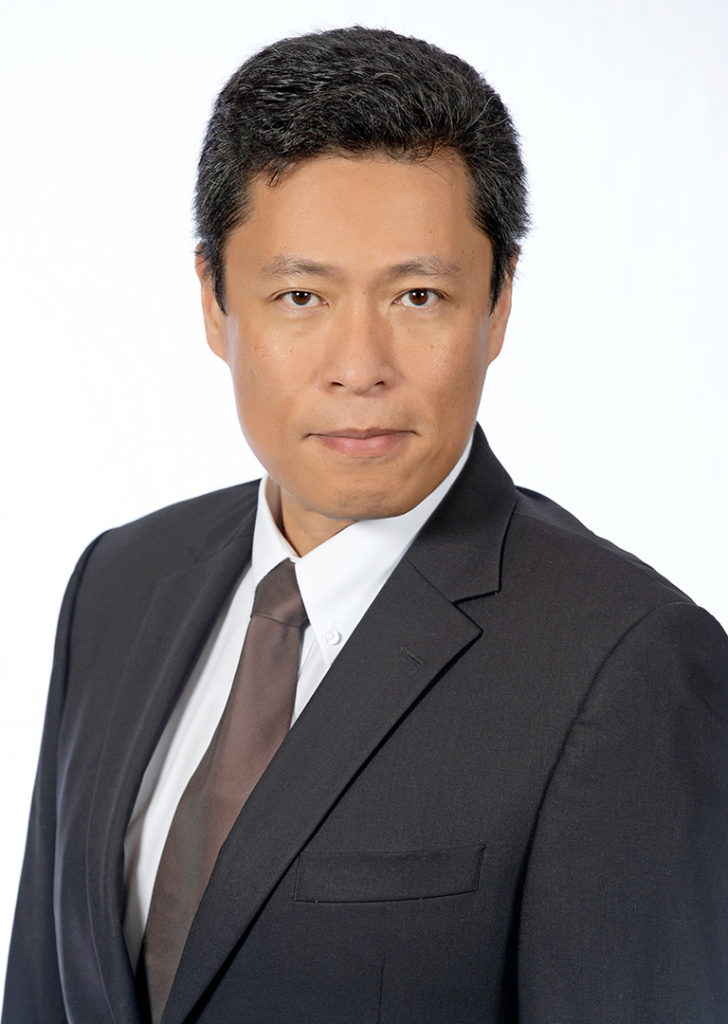As the calendar turns a page to a new year, CIOs are reappraising their strategic priorities to address the impact of social, economic and technological trends on the enterprise and the services performed by their IT organizations.
Macro concerns include the Great Resignation’s impact on labor shortages, high inflation, and the new “work from anywhere” model, among others. By judiciously investing capital to alleviate these challenges, CIOs can assist the attainment of business goals like more profitable revenue and a sharper competitive edge.
StrategicCIO360 reached out to five such CIOs, asking for a glimpse at their IT budgets in 2022. As a group, more capital is being directed to enhance their companies’ cloud architecture, cybersecurity, data and analytics capabilities, automated self-services, and skill sets.
Less On-Prem

In Chinese, the word “crisis” is represented by two characters, one for danger and the other for opportunity. The pandemic exemplified this dual meaning for public company Avnet, a 101-year-old distributor of electronic components, with annual revenue of $19.5 billion and more than 14,500 employees in 48 countries. “It took a crisis like the pandemic for us to be able to accelerate our digital transformation,” explained Max Chan, Avnet CIO.
Like other companies in its industry, supply chain bottlenecks, particularly for electronic products like semiconductors, resulted in production delays through much of 2021. The silver lining was the extra time Chan had to pause and consider better ways for the IT team to work with colleagues, customers and suppliers.
“We took pride here over the years in building a great IT environment and award-winning enterprise-grade data center, but it was holding us back; we couldn’t pivot as quickly as we would have liked to in the initial phase of the pandemic,” said Chan. “We had too much on-prem and not enough cloud.”
The investments in on-premises software made sense in the past, given Avnet’s century of operations. “We could run the business across multiple years with confidence that it was running well,” Chan said. “We realized that we needed to make a switch from on-prem to the cloud to enable greater agility. But we made every excuse possible not to do it. The pandemic ended the excuses.”
Topping the CIO’s wish list for 2022 is to continue to modernize, optimize and simplify Avnet’s enterprise architecture, a journey that began in 2021. It’s a challenging path: Chan must strategically decide which systems should move to the cloud (or stay on-prem) and conduct the orchestrated movement of data to ensure the information flows to the right systems and people. Lastly, he must secure this continually evolving networked environment. “Our CISO reports to me, making cybersecurity a primary mandate,” Chan said.
Other plans in the upcoming year include building a digital platform on top of Microsoft Azure’s cloud offering to simplify access to Microsoft’s machine learning and other data and analytics solutions. “Using these AI tools, we can drive more intelligent decisions within the company and generate more predictive KPIs (key performance indicators) for our customers,” Chan said. “For example, the analytics can help customers manage their supply chain risks at a time when supply and demand are out of alignment.”
Also on his wish list is a bigger budget for talent. “The average tenure of my IT organization is 10 years and more, which is a great thing but comes with some baggage—they know what they know but don’t know what they don’t know,” he said. “I want to help them `get their hands dirty’ with new technology capabilities, training them to receive new certifications and encouraging them to take on new projects, instead of staying in their comfort zones.”
Driving Better Customer Experiences
NCR executive vice president and CIO Bill VanCuren also plans to accelerate a company-wide migration to the cloud in 2022, while “coping with a lot of years of on-prem technology that’s stable but represents the former ways of doing things,” he said.
Like Avnet, NCR is a more than century-old business, founded as National Cash Register, a manufacturer of the first mechanical cash registers, in 1884. Today, NCR makes self-service kiosks, point-of-sale terminals, automated teller machines, barcode scanners and check processing systems for restaurants, retailers, banks and other entities.

As the public company ($6.9 billion in annual revenues) migrates to an enterprise cloud architecture, VanCuren said the blueprint will provide needed agility and leading-edge processes enabling NCR’s customers to run their end-to-end operations more efficiently. “Our mission is all about delivering better customer experiences,” he said.
Among these experiences is simplified product use, from configuring the product through ordering, delivery and installation. “Our plan this year is to configure each product to a specific customer’s use needs, ensuring each restaurant owner, store manager or bank branch has the right technology to run efficient operations,” he said.
Migrating on-prem systems to the cloud abets these aims. “If we were a startup, we’d be entirely cloud from day one,” VanCuren said. “We’re not, of course. We need to gradually gradual transition from on-prem to a hybrid cloud, moving systems in a logical order to the cloud, while maintaining other systems on-prem.”
It is up to the CIO to chart this progression. “We have one of the largest single-entity ERP (enterprise resource planning) systems in our industry, which manages and integrates our financials, operations, manufacturing, supply chain and reporting activities,” he explained. “We can’t move all these functions to the cloud overnight.”
He plans to migrate the functions in phases, beginning with the financials this year. “That alone will take two or three years,” VanCuren said.
Up with Upskilling
At technology and investment solutions company SEI, Ryan Hicke’s wish list includes recruiting new skill sets and upskilling current talent in his IT organization. “It’s number one for me,” the CIO said. “Attracting and hiring talent is a key strategic priority, particularly as we focus more on the cloud, AI, data and analytics, and cybersecurity. We’re not slowing down investments in these areas, but we need more internal and external talent to operate these tools.”

SEI, a public company with $1.9 billion in annual revenues as of Dec. 31, 2021, sells a range of customized investment solutions and enterprise wealth management services to asset managers, banks, wealth management firms and institutional investors. “We’re in a fortunate position with a really strong balance sheet and great cash flow to make some heavy investments in technology in 2022, believing that if we deviate from this focus, it will come back to haunt us,” Hicke said. “We won’t stop, we won’t hit the brakes.”
In recruiting new skill sets, the CIO said he plans to refine the IT organization’s hybrid work experience, introduced after the outset of the pandemic. “The `work from anywhere’ model for tech people is not going away; my job is to figure out the optimal balance,” he said. “I want people to be both productive and happily engaged in work and life, which requires more investments in virtual communication and collaboration tools.”
M&A is another avenue for absorbing new skill sets. In a departure from its history, SEI completed four acquisitions last year, a strategy that will continue in 2022. “They’re not large acquisitions but they are consistent with our strategy to accelerate growth and absorb new capabilities and talents,” Hicke said. “I plan to invest more this year in upskilling, making heavy investments in training the existing IT organization and new recruits. Nothing is more important on my agenda than that.”
Power of Print
The agenda for Leon Roberge is to build out Elevate Sky, a cloud-based platform introduced last year by Toshiba America Business Solutions, a workplace solutions provider, and Toshiba Global Commerce Solutions, a provider of retail store technology solutions. Roberge is the CIO of both organizations, which reside inside Toshiba TEC Corp., a provider of office machinery, itself a business within the giant Japanese multinational conglomerate.

Elevate Sky is a workflow and document management solutions platform supporting users of Toshiba’s multifunction printers, label and receipt printers, and managed print services. “We’ve been strategically building up our cloud infrastructure and SaaS (Software-as-a-Service) applications, with added data and analytics capabilities, for the (printer) marketplace,” said Roberge.
Elevate Sky is integrated with Microsoft Azure, Google Cloud, Dropbox and other cloud platforms. Using a computer device from anywhere in the world at any time, customers will be able to transform a physical document into a digital cloud-based workflow, as well as securely share or print this content. Each print is priced on a per page basis, as opposed to the customary SaaS model, which involves payments for new ink cartridges.
Roberge plans to invest capital this year in expanding the platform’s data and analytics solutions to provide real-time insights to customers, such as printer inventory management metrics. Internal sales and services teams can use the data to “know the customer,” he said, “understanding their pain points to solve problems as well as cross-sell and upsell (products).”
Toshiba technicians also will get a share of this year’s IT budget. “We’re planning to provide our technicians with wearable VR technology to remotely bring up a schematic of a particular printer that’s malfunctioning, providing guidance to fix it while working on it,” he said.
Self-Service IT
2022’s CIO wish list concludes with plans at public company Nutanix, a leader in hybrid multicloud computing, with $878.7 million in annual revenue and more than 6,000 employees. Topmost in mind for Wendy Pfeiffer, senior vice president and CIO, is continuing investments to enable “work from anywhere” opportunities for her IT organization.

“By 2026, most of our tech workers will be digital natives in Generation Z, who are quite comfortable working in a virtual world,” she said. “Older employees, however, may be more comfortable in a physical space. Our mission is to enable all our employees to be engaged and productive wherever that may be.”
Other investments this year include “the best laptop computers and the best collaboration platforms and tools,” she said. “I’m also investing more in automation. In our mixed world of enterprise and consumer technology, employees expect immediacy when interacting with the apps on their mobile devices.”
At present, about 85 percent of the services performed by Pfeiffer’s 100-member IT organization are automated, adding to their workload. “I’m going to double down on that in 2022,” she said, investing in no-code/low-code tools enabling the staff to build applications by dragging and dropping software components. Pfeiffer also is directing more capital to self-service IT support solutions. “Over the next year, if an employee incorrectly enters their password several times and is locked out, we’ll have automation in place to message the person on their mobile phone and provide a temporary password—what we’re calling `self-service-plus,’” Pfeiffer said. “Along with the low-code/no-code tools, the IT team will be liberated to focus on our mission-driven work to make managing the IT infrastructure so simple for customers, it becomes invisible.”









